The A minor pentatonic scale, or any pentatonic scale for that matter, is essential for blues music, rock, & metal.
The pentatonic scale is as the name states, a five note scale, that is well know for its simplicity & versatility. It’s closely related to the blues scale, which features 1 extra note.
Pentatonic scales are relatively easy to learn for musicians of all skill levels, even without music theory. It can be taught using tablature, theory, or simply visual shapes on the fretboard.
This scale is also great for guitar solos as it allows for easy creative expression and is versatile across many genres of music.
Mastering the pentatonics can serve as a stepping stone into more advanced music theory & improvisational techniques. We highly recommend it!

Related: How to play the harmonic minor guitar scale
How to Play the Minor Pentatonic Scale
On the 6th string (low e string), start with your index finger on the first note which is on the fifth fret. Then put your pinky finger on the 8th fret.
On the 5th string use your index finger again on fret 5 & ring finger on the seventh fret.
On the string 4 & 3(g string), do the same as string 5 – index on 5th & ring on 7th
For strings 2 & 1 (high e string), we do as we did with the 6th string – index finger on 5 & pinky on 8th.
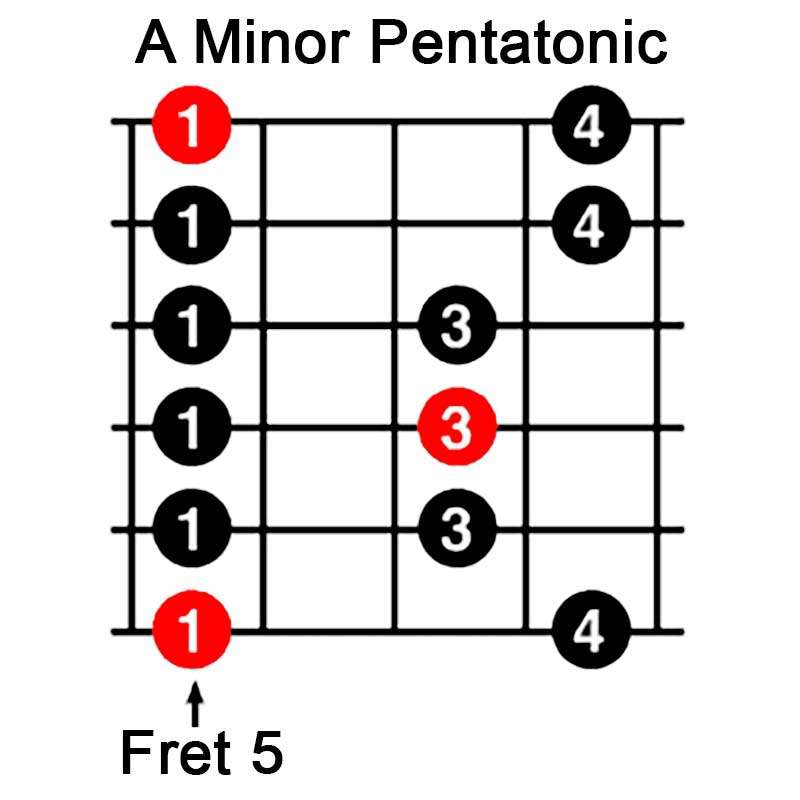
The note pattern is rather simple with only 2 variations. All the notes start on the 5th fret with the middle finger not being used at all. You’re either playing a 5 & 8 or a 5 & 7.
You can even forgo the pinky if it’s too difficult at first & just use your index & ring finger.
Related: 5 Tips For Beginners
Major Scale VS Minor Scale
The main difference between a minor and major scale is the sequence of whole and half steps between the notes.
These are called intervals & not to be confused with scale degrees, which are the assigned numbers to describe note positions relative to the root note in a scale.
Below are the intervals for both guitar scales with W, meanings Whole-step & H, meaning Half-step.
Major Interval:
WWHWWWH
Natural Minor Scale:
WHWWHWW
Major scales have a happier & jovial feel to them, and there is also a sense of completion or resolution.
Minor scales on the other hand, produce a darker & melancholic sound which can create tension in a song.
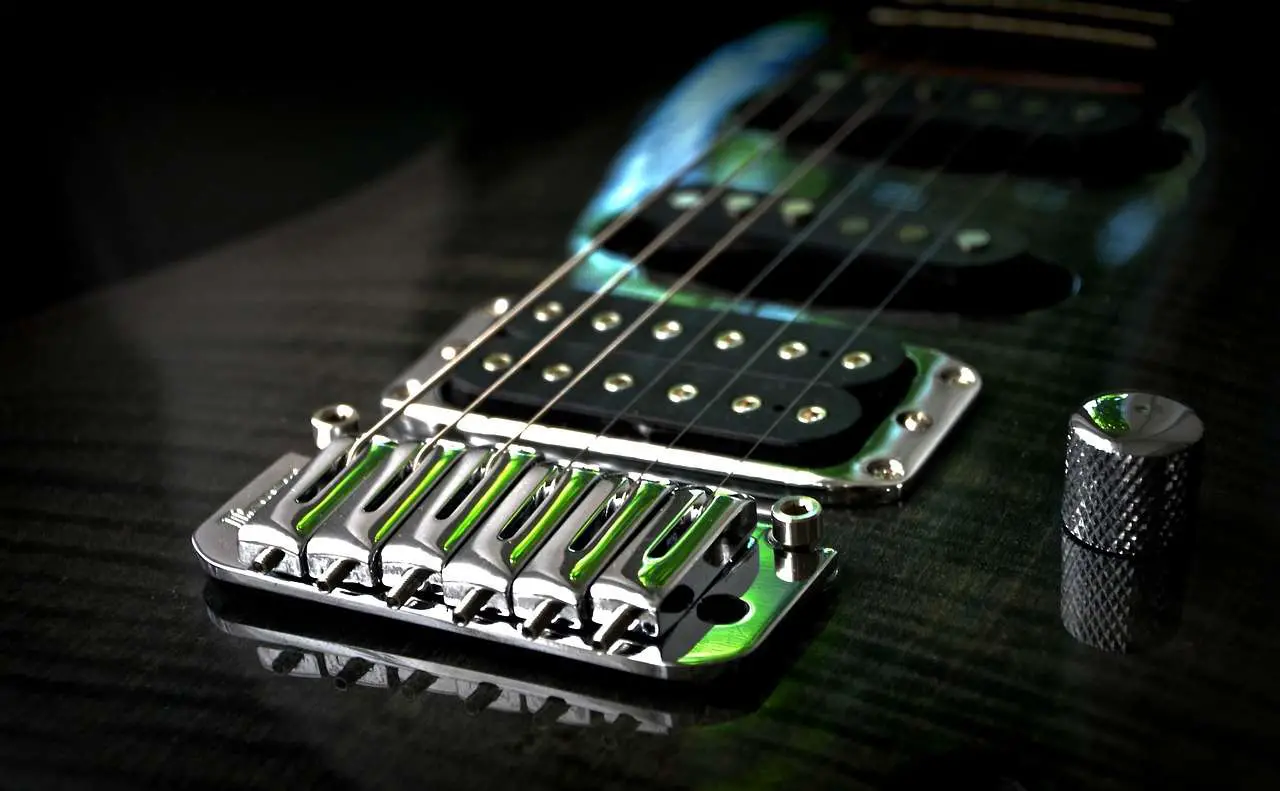
The Major Pentatonic Scale
The major pentatonic scale derives from the major scale, although only five of its seven notes are used.
This pentatonic scale is constructed by taking the major scale’s first, second, third, fifth, and sixth notes.
It is popular in a range of musical styles, including rock, pop, country, and blues, and is recognized for its cheery and joyful tone.
The major pentatonic scale is a fundamental scale for guitarists and recognized for its cheery and joyful tone.
For soloing, it’s frequently utilized as a reduced form of the major scale.
Major scale
The major scale is a seven-note musical scale with a distinct pattern of whole and half steps between notes.
It has a joyous sound and is used to create melodies, harmonies, and chord progressions and serves as a foundation for music theory.
The theory behind the major scale is based on a specific pattern of whole steps (W) and half steps (H) between its notes. The pattern for a major scale is W-W-H-W-W-W-H
This means that there is a whole step between the first and second notes, a whole step between the second and third notes, a half step between the third and fourth notes, and so on.
The guitar solo in Led Zeppelin’s “Stairway to Heaven” is one of the most famous examples of a major scale in rock music.
The solo is in the key of A major, and the notes are A, B, C#, D, E, F#, and G#.
The solo highlights the bright and uplifting sound of the major scale, and it has become an iconic moment in rock music history.
Related: How to play the E Major scale
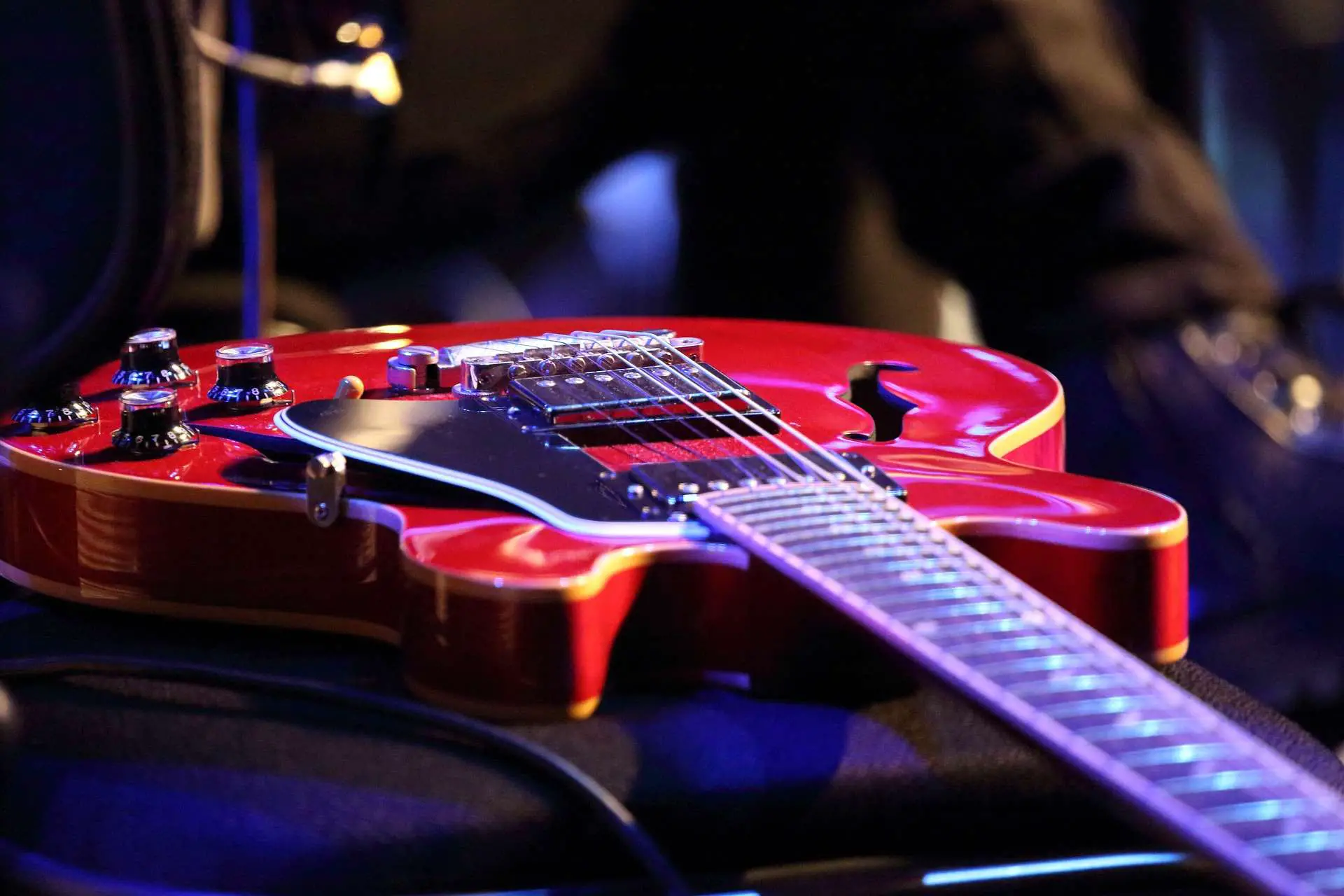
Notes of the A minor pentatonic scale
The pentatonic scale contains five notes, so we have to remove 2 of them from the minor scale to get the minor pentatonic scale. The two notes removed are the second & sixth interval.
The minor pentatonic scale formula consists of first (root), third (:3) 4, fourth (p5) 5th (p5) and seventh (:7) of the minor scale.
The note A, C, D, E, & C are the notes of the Am pentatonic scale.
Root note patterns
Root note patterns are frequently used to assist guitarists in visualizing and navigating the places of the root notes on the entire fretboard.
The root note of a pentatonic scale is the note that gives the scale its name and acts as a point of reference for the remaining notes in the scale.
Root note patterns allow players to easily identify the placement of root notes in various positions on the fretboard and utilize them as a starting point for playing and improvisation with the pentatonic scale.
Within the pentatonic scale, these patterns can also be employed to generate varied phrasing and melodic variants.

The 5 Minor Pentatonic Shapes
The 5 pentatonic forms, often known as CAGED, are a collection of patterns for playing the pentatonic scale in various positions on the guitar fretboard.
Each form is named by the chord shape that corresponds to its place, and they are based on the C, A, G, E, and D open chord shapes.
Guitarists can broaden their range and flexibility on the fretboard and improvise in multiple keys and positions by studying and playing these forms.
The CAGED method is a popular way to study and master the pentatonic scale on the guitar.
(insert photo of the CAGED fretboard)
The A minor scale
The A minor scale, also known as the Aeolian mode, is a natural minor scale that uses the musical note A as its tonic, or starting note. The notes in the scale are as follows: A, B, C, D, E, F, and G.
The formula for creating a natural minor scale is W-H-W-W-H-W-W, where W represents the entire step and H represents the half step. When we apply this formula to the A minor scale, we get:
A – B – C – D – E – F – G – A
W – H – W – W – H – W – W
The A minor scale is a relative minor scale to C major, which means it has the same notes as the C major scale but begins on A rather than C.
As far as the sound & feel, the A minor scale can be utilized to generate a sorrowful, melancholy, or contemplative vibe.
Chords created from the scale’s notes can be used to harmonize the A minor scale. Am, Bdim, C, Dm, Em, F, and G are the chords that naturally occur in the A minor scale. These chords can be used to compose chord progressions and melodies in the key of A minor.
Playing The Scale: Horizontal vs Vertical
Playing the pentatonic scale horizontally involves playing the scale in a linear fashion, moving up and down the fretboard in a sequence of notes that are all on the same string.
This technique can be useful for creating fast, fluid runs and licks across the fretboard. By using hammer-ons, pull-offs, and slides, guitarists can create smooth, legato lines that flow seamlessly.
Playing the pentatonic scale vertically however, entails moving the scale up and down several strings while incorporating different fretboard positions and shapes.
Moving the scale up and down the fretboard while staying within a specific position or shape, such as the CAGED system or other pentatonic scale patterns, is used in this approach.
This technique is useful for creating melodic phrases and patterns that are anchored to a specific fretboard position, as well as for experimenting with different tonal options within a single position.
Applying the A minor pentatonic shape musically
So let’s see how to apply the pentatonic notes to musical situations. The musical use of scale helps you learn the scale better, keeping your mind off the rut and avoiding the reversal of scale.

Example #1 – Stairway to Heaven guitar solo
First examples come from Led Zeppelin’s “Steps to Heaven”. This is a solo guitar lick.
This lick uses position 1 in the A minor pentatonic scale for a melody of A minor. Below is outlined the note used at the beginning of the scale. The unopened notes fade.
You may have realized that this piece contains only one note that is not included in minor pentatonic scale.
At the 7th fret in string 5 is played F note 6 which is in the parent A major scale. It targets the chord base in the F Major chord in the back chords progression.
Frequently Asked Questions (FAQ)
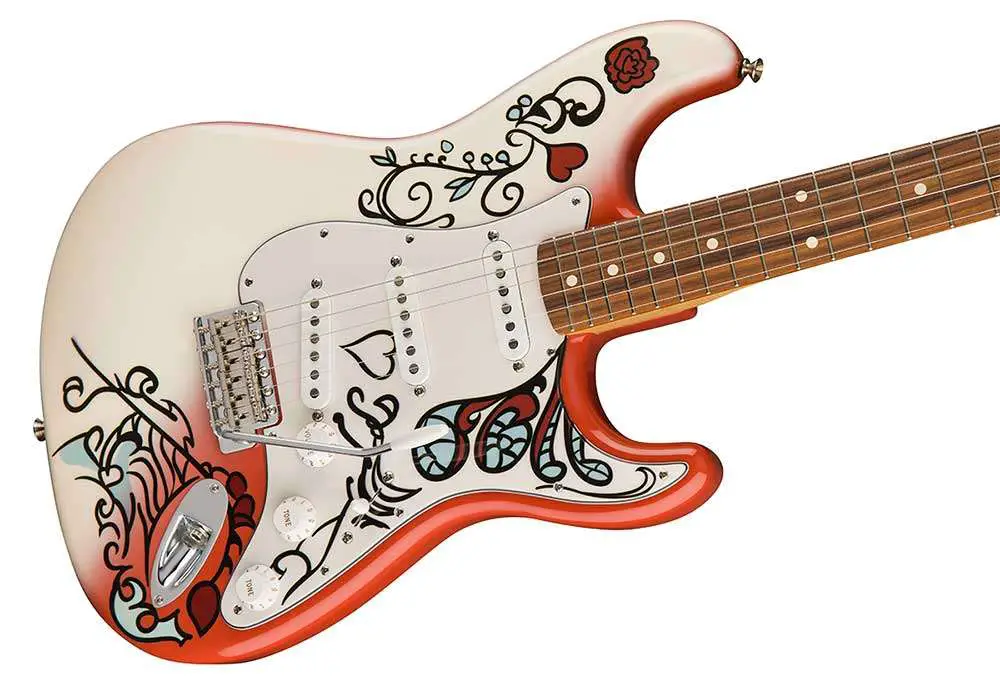
Did Jimi Hendrix use the pentatonic scale?
Yes, Jimi Hendrix extensively used the pentatonic scale in his playing.
Hendrix frequently combined different pentatonic shapes and positions to create his signature sound.
Some of Hendrix’s most memorable solos, including “Purple Haze,” “Hey Joe,” and “Voodoo Child,” make extensive use of the pentatonic scale.
Using the pentatonic scale, Hendrix was able to create a wide range of sounds and emotions, from fiery and intense to soulful and introspective.
What is the difference between A minor scale and A minor pentatonic scale?
The only difference between this scale is that both 2 and Flat 6-notes have been displaced in order for a small pentatonic scale to form. This explains the difference between them. The two notes are the most dissonant notes of the normal major scale.
Where is the A minor pentatonic scale on guitar?
If you want to play it ascending, it starts on the low E string on the 5th fret. Descending , it starts on the 1st string, 8th fret.
Is C Major Pentatonic The Same As A Minor Pentatonic scale?
Yes but one starts on A. They use the exact same notes, and only five notes.
What scale is best for rock solos?
The pentatonic scale, also known as the CAGED system, would be my choice to improvise solos. It’s relatively easy to learn, it’s versatile, & it allows you to solo all over the fretboard.
Can you mix the pentatonic major scale & minor pentatonic scales?
You can use the relative major or minor scales because they both have the same notes, for example C major pentatonic scale to A minor pentatonic. However, you could NOT use the parallel major of minor scales since they have a completely different key signature. For example, E major Pentatonic scale to E minor pentatonic scale.
Why is the minor pentatonic scale used in Blues?
Guitarists get away with using the minor pentatonic scale in blues because the scales mostly have the same notes apart from one, this note is called the blue note. Minor pentatonics are used in minor keys, which is the majority of blues songs are played in.
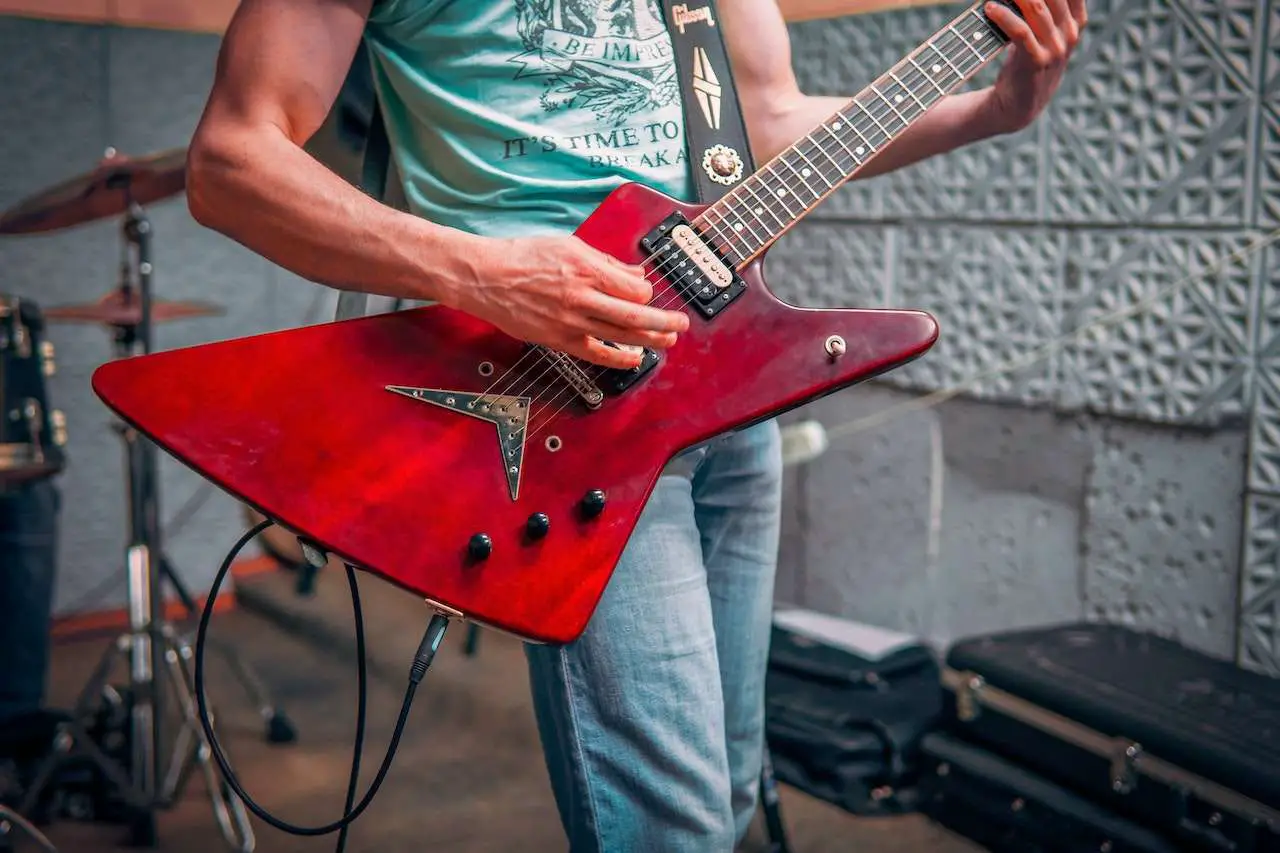
Read: Blues Chords – All You Need To Know!
Conclusion
The minor pentatonics are an iconic part of rock guitar (and bass guitar!) & are highly recommended you learn to play.
Personally, the great thing about this scale (or any other in the CAGED system) in that they don’t require extensive music theory to understand & practice playing.
Related: How Much Practice Is Too Much?
You can simply visualize & memorize the shapes or patterns and play up & down the neck as you feel is most expressive for you.
Thanks for reading, we hope you found this useful & leads you onto mastering the pentatonics!
